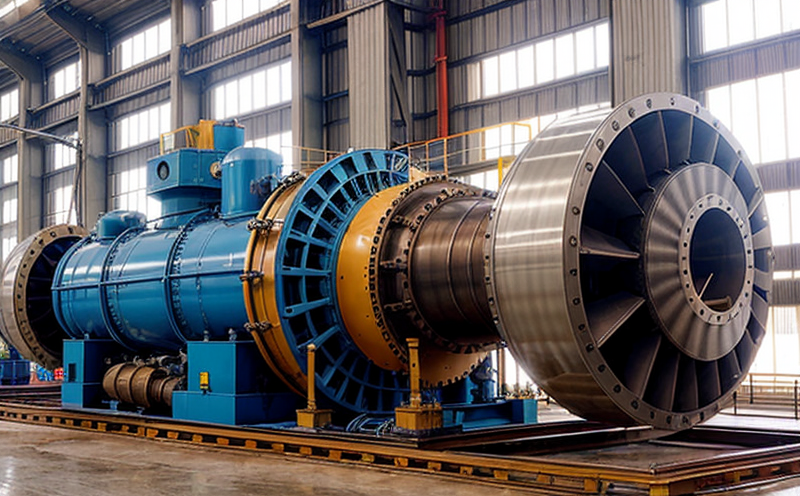Steam turbine inspection
In the realm of energy systems and environmental surveillance, steam turbines play a pivotal role in generating electricity efficiently. Ensuring the integrity and longevity of these critical components is paramount for maintaining optimal performance, compliance with regulatory standards, and minimizing operational risks. A comprehensive steam turbine inspection involves meticulous examination to identify potential issues that could compromise reliability or lead to costly downtime.
The inspection process typically begins with a thorough review of the steam turbine’s operating history, including maintenance records, previous inspections, and any reported anomalies. This information helps tailor the inspection to address specific concerns and optimize resource allocation. The inspection is conducted using advanced non-destructive testing (NDT) techniques such as ultrasonic testing, radiography, and eddy current testing, which are critical for identifying internal and external defects without damaging the components.
Once the inspection data is collected, it undergoes rigorous analysis to determine compliance with relevant standards. For steam turbines, these include international norms like ISO 9001:2015 for quality management systems, ASME (American Society of Mechanical Engineers) codes such as ASME Section VIII Division 1 and II for pressure vessels, and EN 13480-1:2006 for steam turbines. Compliance ensures not only operational safety but also regulatory adherence.
After the inspection, a detailed report is generated, which includes findings, recommendations, and action plans to address any identified issues. The report serves as a roadmap for maintenance personnel and engineers to implement corrective actions promptly, thereby extending the lifespan of the steam turbine and enhancing overall plant efficiency. This proactive approach aligns with broader sustainability goals by preventing failures that could lead to significant downtime or environmental impacts.
To ensure robust inspections, our laboratory employs state-of-the-art equipment and highly skilled technicians who are proficient in interpreting complex data. We leverage advanced technologies such as thermal imaging, vibration analysis, and acoustic emission testing to provide a holistic view of the steam turbine’s condition. By integrating these tools into our inspection protocols, we can detect subtle signs of wear or damage that might otherwise go unnoticed.
In conclusion, a thorough steam turbine inspection is essential for maintaining reliability and safety in energy systems. It enables proactive maintenance, compliance with international standards, and contributes to the overall sustainability of power generation facilities. Our laboratory’s expertise ensures that every aspect of the inspection process is conducted with precision and integrity, delivering actionable insights that drive operational excellence.
Applied Standards
| Standard | Description |
|---|---|
| ISO 13678-1:2012 | Guidelines for inspection, testing and monitoring of steam turbines. |
| ASME Section VIII Division 1 & II | Rules for pressure vessels, which apply to certain steam turbine components. |
| EN 13480-1:2006 | Specific requirements for steam turbines, including design and construction. |
The application of these standards ensures that our inspections meet the highest levels of quality and safety. Compliance with international norms like ISO 13678-1:2012 provides a framework for consistent inspection practices across different regions, while ASME Section VIII Division 1 & II and EN 13480-1:2006 offer detailed guidelines specific to steam turbine design and construction. These standards are integral to our approach, ensuring that every aspect of the inspection process adheres to best practices.
Benefits
The benefits of a comprehensive steam turbine inspection extend beyond mere compliance with regulatory requirements; they encompass several key advantages for power generation facilities. Firstly, regular inspections allow for early detection and resolution of potential issues, thereby minimizing the risk of unplanned downtime. Downtime can be costly in terms of lost production and increased maintenance costs, so proactive measures are crucial.
Secondly, by adhering to strict inspection protocols based on international standards such as ASME Section VIII Division 1 & II and EN 13480-1:2006, facilities can ensure that their steam turbines meet the highest safety and performance benchmarks. This not only enhances operational reliability but also supports long-term sustainability by optimizing energy efficiency.
Thirdly, compliance with these standards ensures that maintenance activities are conducted in a systematic and consistent manner, which is essential for maintaining the integrity of the turbine components. Over time, this leads to reduced wear and tear, extending the lifespan of the steam turbines and reducing the need for costly replacements.
In addition to operational reliability and cost savings, thorough inspections also contribute to environmental sustainability by preventing emissions from unplanned outages. By ensuring that all systems are operating efficiently, we help minimize waste and reduce the overall carbon footprint of power generation facilities.
Moreover, our laboratory’s expertise in conducting these inspections provides valuable insights into potential areas for improvement. These insights can inform future maintenance strategies and contribute to continuous improvement initiatives within the facility. By leveraging this knowledge, operators can enhance their operational practices and further optimize performance.
In summary, a comprehensive steam turbine inspection offers significant benefits in terms of reliability, safety, cost savings, and environmental sustainability. These advantages are achieved through rigorous adherence to international standards, systematic maintenance protocols, and continuous monitoring of key performance indicators.
Environmental and Sustainability Contributions
Reduction in unplanned outages due to early defect detection.
Enhanced energy efficiency through optimized performance monitoring.
Extended lifespan of steam turbine components, reducing material waste.
Minimized environmental impact by preventing emissions from extended operational periods.
The proactive nature of our steam turbine inspection services supports broader sustainability goals within the energy sector. By ensuring that facilities operate at peak efficiency, we contribute to a more sustainable and resilient power generation infrastructure. These contributions align with global efforts to reduce carbon footprints and promote renewable energy sources.





